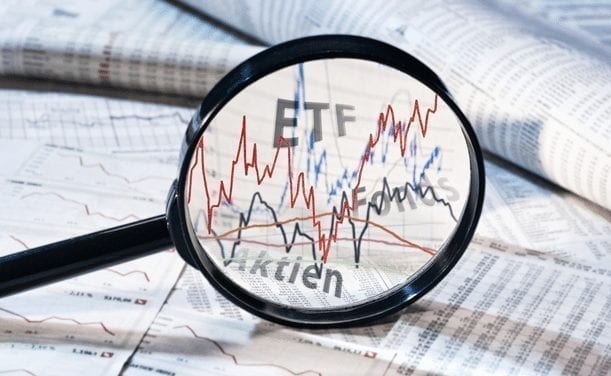
In some cases the fees can be high or hidden and it can come as quite a shock. Here is a run-down of how Nutmeg fees work.
- Calculation
- Collection
- Cost-saving measures
- Market spread
Nutmeg fee calculation
Nutmeg introduced a new fee structure back at the start of 2017. This enabled the company to lower fees right across the board so that all customers will only pay the best available fee rate each time. Fee rates vary for different types of investment. If you have a fully managed portfolio with Nutmeg, then you will pay the standard rate of 0.75% on the first £100k, and for all funds above that, the fee is 0.35%. In addition to the Nutmeg charges, you may be subject to investment fund costs that are levied by the provider.

The rate is different for a fixed allocation portfolio. On the first £100k, it is 0.45%, and on anything above that, it is 0.25%. If you have more than one fixed allocation pot, then they will be combined for the fee to be calculated. Again, investment fund costs could also be levied. All fees are calculated each day, so every day there will be 1/365th of the fee applied to the value of your investments that day. Fees will change as investments grow or as you remove or add funds. Nutmeg clients who check their portfolio are shown the value after all fees have been applied.
Fee collection
All fees are collected from the account at the end of each month. There is no requirement for investors to make extra payments to cover fees, as they are taken from the funds available in the account and nothing is taken from your bank account. You do need to be aware that as daily values reflect fees that have been accrued, it will appear as though the current value of the investments is lower than the market value. To see all the fees that have been taken from your account, head to the ‘Investment, Fees & More’ menu to see the fees being applied to a specific set of investments or the entire portfolio. Nutmeg charges will be displayed as ‘Nutmeg Fees, excluding VAT’. There is no fee to be paid on cash before you choose to invest it in a Nutmeg fund. And what about fees applied to promotions? A promotion will be clearly marked on your pots, and any fees that need to be paid are charged accordingly. There are occasions when the promotional rate might be higher than the standard rate, but if this happens, the lower of the two is applied to the account.
Nutmeg aims to keep costs down
The use of advanced technology and optimising in trading, such as ETFs (Exchange Traded Funds), can help Nutmeg to trade for less. When trading ETFs, they generally get better with scale, so Nutmeg puts all client transactions together to trade them in one block instead of dealing with each client individually. Nutmeg also takes advantage of this system by conducting ‘cross’ trades. If a client decides that they have reached their targets and chooses to withdraw some of their money, then this can be matched because other clients will be adding more to their funds and choosing to invest in ETFs. Working this way means that there is less buying and selling in the market, and therefore the cost of trading is kept to a minimum. Using this system in 2017 reduced trades by 29%. The same way of trading cannot be done with mutual funds, so these are naturally more expensive to the investor. This way of ‘block’ trading is done through firms that specialise in ETFs, and this is referred to as ‘OTC’ – over the counter trading. In most cases, this will allow Nutmeg to get better prices than if they were carrying out these trades using the London Stock Exchange.
- ETF trading available
- 06% better trades thanks to OTC
- Cross trades on offer
The market makers that Nutmeg uses for this type of trade are the most competitive for that fund. Some of these counterparties will offer good rates for bonds, while others have different specialties, allowing Nutmeg to choose the firms that have the most competitive rates. OTC trading is important because it allows for a larger range of options. There are some ETFs that would prove to be too difficult to trade without the help of a specialist market maker. Some firms that are not geared up for OTC trades may simply choose the ETFs that are the easiest to trade, not necessarily the ones that are the best funds. Nutmeg prides itself on always choosing the best fund, and most of their ETF trades in 2017 were conducted OTC. So how does this save the investor money? Using OTC and crossing trades, Nutmeg is able to conduct trades that are on average 0.06% better than the costs that are available to most investors. While 0.06% may not sound like much, over time savings such as this on your Nutmeg fees will add up. Nutmeg estimates that over the last two years, it has been able to save investors around £1.9m with these methods.
What should the investor expect to pay?
Nutmeg makes it clear which of its services and transactions will attract a fee, and a stockbroker comparison will enable you to compare the different fees offered by each. With Nutmeg, an investor will not have to pay any set up fees or exit fees, so when you open an account and deposit money, there is nothing to pay at that point. In addition, the standard withdrawals and account closures do not attract any fees either. There are no transaction or trading fees. It should be noted that the average investment fund costs are around 0.21% each year and are paid out to the fund providers. The average effect of market spread is around 0.09% each year. There is also a £20 fee for an in-specie transfer out. All percentages quoted are per annum. All calculations are carried out at the end of the working day. The calculation is carried out, applied to the account and then once a month these fees are collected. While there are no fees applied to withdrawals, note that there may be restrictions on when you can withdraw funds. If your investments are a pension, then there are rules that prevent you from withdrawing funds before the age of 55, although you do have the option to transfer the funds to another provider if you wish. There are also withdrawal restrictions that are applied to Lifetime ISAs, although standard ISAs and general accounts have no withdrawal restrictions.
- Average investment fund cost of 0.21% per annum
- £20 fee for in-specie out transfers
- Withdrawal restrictions apply to Lifetime ISAs
The effect of market spread on fees
Market spread is something that will affect your investment, and the Nutmeg site explains how this works. Nutmeg will be buying and selling assets on behalf of their investors, so the effect of market spread cannot be avoided. Market spread is the difference between the price it costs to buy and the price that it costs to sell. Most people will see a good example of this when they are going on holiday. The purchase of foreign currency is done at one rate, and if you need to sell it back again, the exchange is calculated at another rate. This difference is sometimes referred to as the ‘bid-offer’, but in trading it is often called the market spread. The system of investing in ETFs at Nutmeg means that there is market spread, but steps are taken to ensure this is as small as possible by choosing low-cost ETFs and combining client orders in trading so that costs are kept to a minimum. The average effect of market spread with Nutmeg is estimated at 0.09%, and this is based on a 3-year annualised effect on portfolios that are fully managed. However, it is important to remember that this is an average and your own investments could be subject to a different rate of market spread.

Getting started in investing with Nutmeg
Once you have familiarised yourself with Nutmeg fees, you may be considering investing, so it is good to know that you can get started with as little as £100 in your account. This can be invested in a Lifetime ISA, or you can opt to invest in a standard stocks and shares ISA, a personal pension or simply open a general investment account with the firm. There is no limit to the number of pots that you can have, but you need to be aware that the Nutmeg charges will be applied to the whole pot. You can establish each one to have its own timeframe and determine the risk level for each. To minimise potential losses, it is a good idea to become familiar with the various types of investment and understand how each one works. On its website, Nutmeg has published a list of tips, one of which is to invest in things that you understand. Shares, bonds, property and cash are the main investments. Shares are often seen as a good investment because you get a share of the company’s profit, known as a dividend. While many people expect the price of their shares to rise over time, the value of shares can also easily go down.
Bonds work in the form of a loan to a company or even a government. The investor receives a set amount of interest that is paid over a set period of time. High interest rates are often offered by companies that have a lower credit rating because they find it harder to attract investors. Bonds are considered to be less risky, and changes in interest rates can affect the interest that is paid to the investor. This means that the Nutmeg charges that you pay may fluctuate because you cannot be sure that the value of the fund will remain consistent. If you put all your money into shares, a bad day on the stock market could dramatically reduce the value of your investment. Nutmeg offers ten distinct portfolios with a range of assets available in each, allowing you to balance your investments based on your own risk profile. It is a good idea to consider what you are aiming to achieve from your investments, as this could affect the choices that you make. If you prefer to take a steady approach, then bonds and gilts might be your best option, but others will choose to invest in a range of shares from around the world.
Our verdict on Nutmeg fees
Our Nutmeg review shows that the Nutmeg site offers detailed and clear explanations on the fees that it charges. It explains exactly how they are calculated and the percentages that you should expect to pay. It is clear on how this is applied to your investment account and when the charges are actually taken from your account. With the additional steps taken by Nutmeg to ensure that costs are kept as low as possible by investing in ETFs and operating cross trades, the savings can be passed onto the customer. The site is easy to understand and ideal for beginners who are just getting started in investing.
The fee structure is a set percentage for the type of portfolio that you have and the amount you have invested. You can even keep track of your account using the Nutmeg app, so you can see the fees being applied no matter where you are. Finding the best stock broker for you is easier with a clear understanding of how the fees structure works, and the Nutmeg site provides the information that you need in simple terms.
PEOPLE WHO READ THIS ALSO VIEWED:
